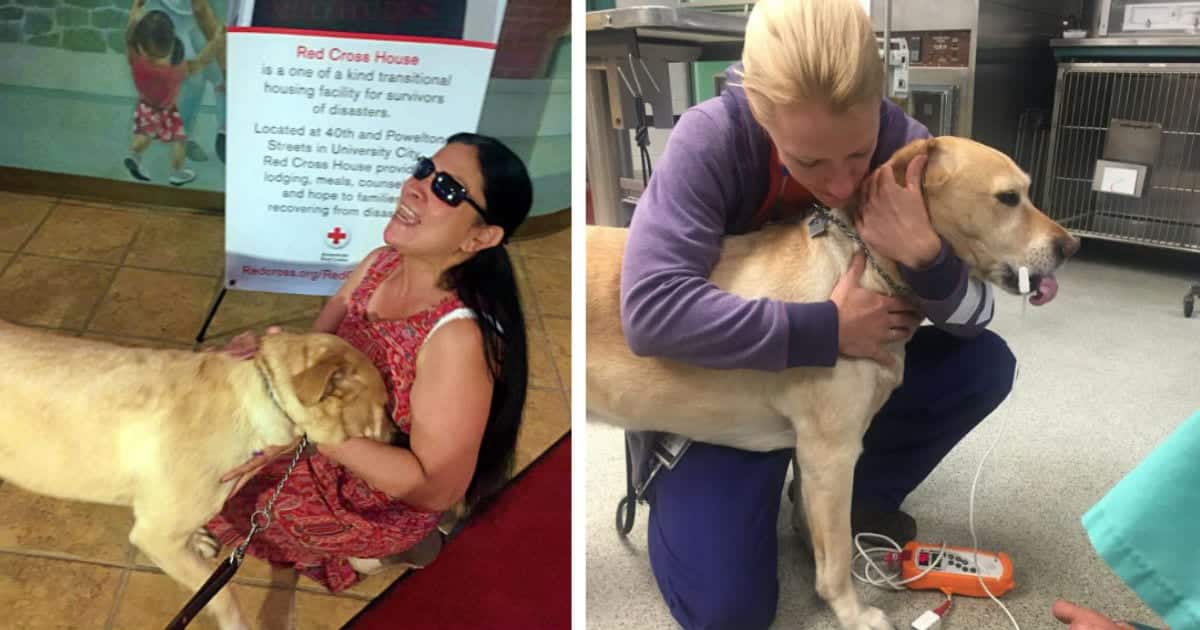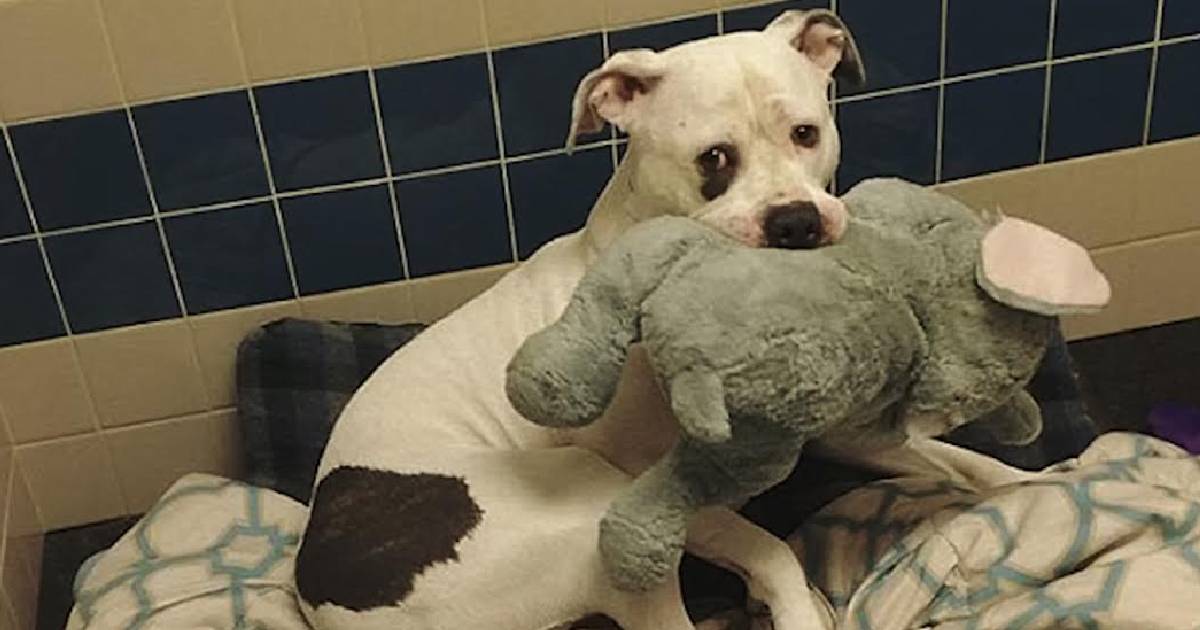The Current Science on Hormone-Sparing Alternatives for Health and Longevity
Index:
A New Perspective on The Decades-Old Practice of Conventional Spaying and Neutering Dogs
Once in a few decades, a medical discovery leads to a dramatic change in how we care for ourselves, and or our beloved canine companions.
The scientific research and discovery of the negative impact of conventional spaying and neutering of our dogs is one such moment, paving the way for a brighter future in veterinary medicine, healthcare, and a longer life for your beloved dog.
While more research is needed, science has confirmed that the removal and absence of hormones in dogs has far-reaching health consequences. Muscular-skeletal injuries, ligament tears, arthritis, chronic inflammation, pain, thyroid and adrenal issues, allergies, organ dysfunction, and behavior problems such as fear and aggression. The rate of certain forms of cancer is also related to conventional neutering and spaying.
As a result of these significant findings, the World Small Animal Veterinary Association (WSAVA) has made a landmark decision. As of May 2024, they no longer endorse conventional spay and neuter procedures, marking a profound shift in the field of veterinary medicine.
The Best of Both Worlds: Natural Alternatives and Evidence-Based Solutions
As devoted dog parents, you and I care about everything from the training methods to the food and supplements we give our dogs, regular exercise, and the toys they play with. Most importantly, when it comes to preventative care, you want the best of both worlds: natural alternatives and practices based on current data, rooted in solid science.
Perhaps no other healthcare decision you’ll make has as great an impact on the long-term health of your dog, as when, how, and perhaps if, you should spay or neuter your dog.
For decades, early spaying and neutering dogs has been the routine practice of veterinarians, and shelters, considered the gold standard of care. In many ways, it was viewed as a defining choice of responsible pet ownership.
Yet, what if the conventional practice behind these surgeries is no longer as beneficial as once thought? What if this standard of care, persists purely because most people don’t question the impact of the absence of hormones in our dogs?
For many decades rescue organizations, veterinarians and responsible pet guardians focused mainly on preventing dog and cat overpopulation and reducing homelessness.
However, thanks to the increasing number of studies on the effect of conventional spaying and neutering of dogs, it is our duty to reassess the practice of spaying and neutering.
I too have had to shift in the face of my own clinical experience and these new scientific discoveries.
The good news is that with the updated guidelines for dog sterilization, we can still satisfy the reasonable goal of rescue organizations to prevent homelessness while preserving the health of our beloved dogs.
If you’re here because you’ve not yet spayed or neutered your dog and want to make as informed a decision as possible. You’ve come to the right place. Perhaps your dog has already been spayed or neutered— you too have come to the right place.
Here we’ll explore the historical origins of these practices, and the cutting-edge, modern scientific research, highlight emerging viable alternatives, and empower you to make informed choices.
The Origins of Spaying and Neutering: A Historical Perspective
In ancient civilizations, spaying and neutering dogs was used for population control. In ancient Greece, Rome, and Egypt, animals were often castrated to make them more docile, and manageable.
By the early 20th century urbanization brought pets into closer contact with humans. By the early sixties, to lower euthanasia rates, reduce overpopulation, and control stray dog populations, animal welfare organizations emerged, such as the ASPCA, which advocated the procedure of early spaying and neutering dogs.
As a result, this became the standard of care and has for years, been believed to convey additional health benefits, such as lower cancer risk.
In recent years, new research has emerged on the early desexing of dogs that has raised concerns about the harmful impact that the absence of hormones has on nearly all systems, leading to various health and behavior issues in both male and female dogs.

The Role of Hormones in Canine Health: More Than Just Reproduction
Every dog like every human, needs to have sufficient hormones to fully develop, have functioning organs, and reduce the risk of disease. Sex hormones play a vital role in reproduction; however, their role reaches far beyond reproduction.
Biology of Hormone Production in Brief
While the testicles or ovaries are hormone producing glands, there's a whole cascade of processes. It all starts in the hypothalamus, located deep within the central portion of the brain. It can be seen as the connector between the brain and the endocrine (hormone) system to translate sensory stimuli from the eye, and nose. For example, when a male smells or sees a female in heat.
The hypothalamus releases the GnRH (gonadotropin-releasing hormone), which sends a signal to the pituitary gland to release the luteinizing hormone, LH. When LH reaches the gonads, testicles, and ovaries, it triggers the production of sex hormones testosterone and estrogen. Further down the cascade, when the pituitary gland registers lower levels of testosterone and estrogen, it releases LH, which leads to more hormone production.
This system is similar to a flushing toilet. If there is enough water in the tank the valve closes. If the tank is empty the valve opens.

The Main Role of Testosterone in Male Dogs
- Muscle Mass and Strength: Testosterone is vital for muscle growth and maintenance, contributing to greater muscle mass in males.
- Bone Density: It supports bone health by promoting bone density, and reducing the risk of fractures.
- Mood and Cognition: Testosterone influences mood, energy levels, and cognitive functions. Low levels can lead to depression and cognitive decline.
- Libido: Affects sexual desire and arousal.
- Cardiovascular Health: Maintaining normal testosterone levels can improve cardiovascular health by enhancing lipid profiles and reducing visceral fat.
- Metabolism: Testosterone plays a role in regulating fat distribution and overall metabolism, impacting body composition.
- Organ Function: Testosterone is crucial for maintaining muscle mass, bone density, and red blood cell production. It also influences liver function and lipid metabolism.
- Immunity: Testosterone can modulate immune function, often exerting an immunosuppressive effect that may reduce inflammation but also potentially lower resistance to infections.

The Main Roles of Female Dog Hormones
Estrogen:
- Bone Health: Supports bone density and reduces the risk of osteoporosis.
- Cardiovascular System: Helps regulate cholesterol levels and maintain vascular health.
- Central Nervous System: Influence’s mood, and cognitive functions, and may reduce the risk of neurodegenerative diseases.
- Liver function by influencing the production of certain proteins and enzymes.
- Immunity: Estrogen modulates immune responses, potentially enhancing the body's ability to fight infections and reducing inflammation.
- Skin and Hair: Promotes skin hydration and elasticity, and affects hair growth patterns.
Progesterone:
- Menstrual Cycle Regulation: Stabilizes menstrual cycles and prepares the body for pregnancy.
- Mood and Sleep: This may influence mood stability and quality of sleep.
Testosterone:
- Muscle and Bone Mass: Contributes to muscle strength and bone density.
- Libido: Affects sexual desire and arousal.

Hormonal Balance and Overall Health
Hormones like testosterone, estrogen, and progesterone do more than regulate reproduction; they influence a dog’s metabolism, immune system, temperament, and even mental health.
These hormones are removed through traditional spay and neuter procedures and may lead to a range of health issues, from joint disorders to increased cancer risks and behavioral changes.

Biological and Health Consequences of Removing Gonads in Conventional Spay and Neuter Procedures
For the longest time, most of us veterinarians didn't question traditional spay and neuter procedures, nor did we consider the long-term consequences of the absence of hormones.
Most vets, shelters and rescue organizations have been so focused on reducing pet overpopulation and homelessness, the health problems caused by removing the gonads were left unnoticed.
As we’ve seen, multiple studies now confirm health problems, depression, behavior issues and cancers. Interestingly, some of these studies were originally inspired by research done in women in menopause who suffer similar symptoms.
So, what happens in neutered and spayed animals?
When gonads and ovaries are removed, the pituitary gland overproduces LH in an attempt to restore sex hormone levels, which is an impossibility in altered animals. This results in LH levels that are often 30-50 times higher than normal. LH then attaches to receptors in other tissues, ligaments, the thyroid gland, the brain, skin, intestinal lining, joints, and more.
This elevated LH leads to a rise in inflammation in the affected tissues. An out-of-balance inflammation response can wreak havoc. As the luteinizing hormone elevates 30, 50 times or higher, chronic health issues may develop, along with behavior problems such as fear, anxiety and or aggression.
Does Age and Breed Make a Difference?
A 2023 research paper by Benjamin Hart, et al (with the support of the American Kennel Club and the UC Davis Center for Companion Health) titled; Decision-Making on Recommended Age of Spay/Neuter for a Specific Dog: General Principles and Cultural Complexity, offers evidence that the removal of hormones through traditional spay and neuter procedures may lead to a range of health issues, from joint disorders to increased cancer risks.
Based on research and my own experiences, sadly, these biological changes affect all spayed and neutered animals— no matter how early or late. Early spay or neutering does; however, appear to be more detrimental. Most puppies are neutered before they achieve maturity, and the trend has been to desex dogs as early as two to three months.
Additionally, this deficit delays closure of growth plates which can lead to problems of shoulder, elbow, and hip dysplasia. In general, larger breeds appear to be at greater risk because they do not fully mature until 18 to 24 months.
The Known Risks of Early Spay and Neuter: What the Science Says
Joint Disorders and Musculoskeletal Health
Dr. Benjamin Hart and his colleagues at the University of California, Davis, highlight in their research, the significant risks of joint disorders, particularly in large breeds.

Cancer Risks
Studies have found that early neutering increases the risk of certain cancers, such as lymphoma, osteosarcoma, and hemangiosarcoma. Dr. Karen Becker explains that “Removing hormone-producing organs at a young age disrupts the endocrine system, leading to serious consequences like an increased risk of aggressive cancers”.

Behavioral Issues Linked to Hormonal Changes
Elevated levels of luteinizing hormone (LH) post-neutering can trigger inflammation in the brain, leading to anxiety, fear, and even aggression. Dr. Jack Oliver from the University of Tennessee, notes that these hormonal imbalances can make dogs more reactive to stress and prone to fear-based behaviors.
These risks I’ve highlighted in this section, are the tip of the iceberg. Chronic conditions such as inflammatory, endocrine, immune, or metabolic diseases may also be linked, either partially or entirely, to the absence of essential hormones.
Imagine your car without fuel or oil. Without the proper inputs, your vehicle won’t run at all, or the engine will burn out. In the same way, your dog needs the proper hormones to keep the system firing on all cylinders.
Hormone-Sparing Sterilization: A Solution for Optimal, Long-Term Health
I can imagine, some people being unhappy about the proposal that the traditional spay and neutering procedures should be a thing of the past. I believe these concerns stem mainly from the misunderstanding, that changing our approach could lead to homelessness and dog abandonment
The revised 2024 guidelines from WSAVA should help to alleviate those concerns. Their recommendation outlines an approach that both prevents unwanted pregnancies and homelessness and prioritizes optimal health and longevity. WSAVA suggest:
- Dogs living with responsible guardians should remain intact as they are able to prevent unwanted breeding by keeping female dogs in heat under direct supervision and preventing the free roaming of male dogs.
- In rescue shelters or living in situations where unplanned pregnancies can't be avoided, dogs should undergo hormone-sparing sterilization: vasectomies and ovary-sparing hysterectomies.
Such a protocol ensures that dogs grow up benefiting from sex hormones and avoid the health problems linked to conventional neutering and spaying.
Hormone replacement therapy for dogs that have already been spayed or neutered.
Hormone replacement has been extensively studied in women in menopause, where great progress has been achieved. Even the early concerns about hormone replacement therapy and its possible connection with cancer have now been debunked.
If your dog has been spayed or neutered—or if your dog receives treatment for any chronic ongoing condition, mobility issue, repeated injuries, allergies, immune system and hormonal disorders, behavior problems, and low energy. It is reasonable to consider hormone replacement therapy.
From findings of Dr. Michelle Kutzler and other researchers (and my own clinical experience), I believe a high number of neutered and spayed patients in veterinary medicine suffer from some sort of form of what is now being referred to as "spay and neuter syndrome."
How to Help Your Dog if it Suffers From "Spay and Neuter Syndrome"
Certainly, not every health problem your dog may experience can be attributed to this issue. Still, in the same way, other hormones such as thyroid, adrenal hormones and insulin play a vital role in health, well-being and longevity, it is no different with sex hormones.
Regrettably, we veterinarians have not been taught this. Our focus has primarily been on the welfare related aspects of spaying and neutering— not thinking the removal of the gonads could be damaging our patient’s health.
For better or worse, the history of medicine is intertwined with similar discoveries and the inevitable paradigm shifts. This is how we evolve.
With these evolutionary insights, it is now clear that spayed and neutered dogs may benefit from hormone replacement therapy (HRT).
A Hormone Replacement Protocol for Male Dogs
Step 1. Suprelorin (Deslorelin) Implant Under the Skin
Originally intended to stop luteinizing hormone production as a form of non-surgical sterilization, this microchip-sized implant is a GnRH agonist. In lay terms, it increases the production of gonadotropin-releasing hormone in the hypothalamus, which paradoxically shuts down the production of LH.
There are two sizes of implants: 4.7 mg (six-month duration) and 9.4 mg (12-month duration). Generally, I suggest the use of the six-month implant (initially). Then decide if a six-month or twelve-month implant is more convenient for consecutive implants. *
The effect of the implant will be noticed almost immediately. My dog Pax was very sleepy and appeared tired for a few days, and the decrease in LH (luteinizing hormone) related inflammation, muscles, joints and back was very noticeable.
*Note: Suprelorin is currently approved for dogs in the European Union, Australia, New Zealand, Mexico, and Canada where only a 4.7 mg implant is available.
In the USA, Suprelorin is only approved for use in ferrets. However, many other veterinary medications are used off-label. If possible, find a holistic or open-minded veterinarian and propose that you sign a waiver of responsibility to have the microchip implanted.
Step 2: Testosterone Administration
The current testosterone replacement protocol suggests 0.5 mg/kg subcutaneously (under the skin) weekly. This is a very simple administration that any dog guardian can do on their own.
Your dog will likely show increased interest in females and other dogs, sniffing and urine marking. Some dogs may try to "hump" other dogs more or display other forms of sexual behavior but this can be generally addressed by training and basic obedience.
There is still a stigma that persists around testosterone administration as it is abused by bodybuilders. However, the doses used in dogs are in much lower, physiological amounts. Therefore, they are unlikely to cause these effects and or health issues beyond the normal realm of intact dogs.
Based on research and also my own personal experience, the overwhelmingly positive effect of HRT on the physical and emotional well-being of dogs is undeniable.
A Hormone Replacement Protocol for Female Dogs
The idea of conducting studies on the effect of ovary-hysterectomy came from human studies of the effect of menopause in women. Inflammation, joint and muscle pain, depression, brain fog, and decreased quality of life have been confirmed to be connected with pre-menopause and menopause.
Given all we know, and has been studied in menopausal women, it should come as no surprise that female dogs with no sex hormones undergo similar changes. One of the most commonly observed problems is urinary bladder incontinence or sphincter incompetence.
For many decades this condition has been treated in veterinary medicine with supplementing estrogens, which is in effect, a form of hormone replacement therapy.
While female dogs have a much more complex hormonal cycle consisting of the production of estrogen, progesterone, and testosterone based on whether they are in heat, pregnant, or nursing, the current HRT protocol consists of the following:
Step 1: Suprelorin (deslorelin) Implant
Initially, request that your veterinarian run the LH level test to confirm if the luteinizing hormone is elevated. If so, start with a 4.7 mg subcutaneous implant (under the skin).
Step 2: Supplementing Estrogens
Based on the recommendation of a board certified theriogenology (male and female reproduction) specialist, the current hormone replacement therapy in spayed females is identical to the protocol used for the treatment of urinary incontinence.
It consists of the administration of either estriol (2 mg/dog) orally every 24 hours for 14 days, then reduced to 1 mg daily, or diethylstilbesterol (0.1-1 mg/dog) every 24 hours for 3–5 days then weekly or as needed.
Suprelorlin may need to be added to this treatment, depending upon the ability of the estrogen replacement to significantly lower LH concentrations.
This means that LH levels should be ideally measured before the start of hormone replacement therapy and then in 1 and 3 months after the start to see if LH is at normal levels.
My general impression is that this protocol may be finely tuned as more research is done as estrogen levels naturally fluctuate during the cycle of intact females.
During anestrus, the phase when the dog is not in heat, estrogen levels are at their lowest. To add to the challenge, specific numerical values for non-estrus estrogen levels in dogs are not readily available.
There are also some opinions that the supplementation of low-dose estrogen and testosterone should be considered as they both are produced by the ovaries in intact females.

Real-World Success Stories of Hormone Replacement Therapy
What happened to my dog and his progress on Hormone Replacement Therapy
At the age of 18 months, my beautiful Border Collie, Pax, was a healthy and strong dog.
About six months after he was neutered, I started to notice that Pax would occasionally limp, getting progressively worse.
Tests, X-rays, and other exams were inconclusive, and despite rest, rehabilitation and physical therapy, he was not getting better.
For three years, we could no longer enjoy the beach, swimming, and mountain hiking together and it was heartbreaking to see him hobbling around.
I was devastated.
His challenges prompted me to search for answers to his unexplained lameness, and eventually, I came across the research of Dr. Michelle Kutzler and Dr. Linda Brent and decided to start Pax on the hormone replacement therapy protocol mentioned above.
His transformation has been incredibly positive similar to dogs in the research studies.
Almost immediately, Pax became happier, had more energy, and slept less during the day. His coat has become thicker, his main longer and more pronounced. You can see what happened in the before and after video below.
He’s everything I would expect from a 5-year-old dog.
As for any negative effects. He has not displayed any. Except for more sniffing, being even more cuddly with us, friendly with other dogs and the rare attempt to "hump."
It took about two months for him to recover from his lameness and injuries. I am thrilled to report he’s been running, hiking, and swimming as before his procedure and he is happy, and injury free.

He continues to get .2mg/kg of testosterone cypionate subcutaneously (injection under the skin) weekly and will get a new implant as required (every six or twelve months) depending on the potency of Suprelorin I decide on.
Challenges, and Pitfalls: What’s Holding Back Change?
No Time for Division
As with any landmark discovery, some people will recognize, and feel comfortable with change. Others will need time. Instead of finger-pointing and dividing into separate camps, either the conventional spay and neuter or hormone-sparing, the official 2024 WSAVA guidelines clearly suggest we can have both.
A sound practice for dog population control through ovary-sparing spay and vasectomy in shelters, and also allows dogs living with responsible dog parents to remain intact. A paradigm shift, and the compassionate path forward for all.
According to reports from Parsemus.org, an organization that has participated in some of the main research, there is already an increased demand for veterinarians who do hormone-sparing procedures.
Market demand has always been the most powerful force for change, and I believe this is no different.
Conclusion: Rethinking Spay and Neuter for Your Dog’s Health and Longevity
As a responsible pet parent and dog lover, the choice of whether to neuter or spay your dog or not is among the most important decisions you’ll make. Thanks to the compelling body of scientific evidence available, it's clear that the removal of your dog’s reproductive organs may lead to far-reaching health consequences, which I have summarized here.
I have no doubt that hormone-sparing procedures, or leaving your dog intact will have a profound positive impact on your dog’s health and longevity.
If you’re considering spaying or neutering your dog, now’s a good time to evaluate the alternatives. Consider the option that is the most likely to provide your dog with the very best outcome, today and in the years to come— for their best life, and your peace of mind.
Solutions and Actionable Steps You Can Take
What next?
Millions of dogs suffer unnecessarily from life-altering health problems as a result of traditional spay and neuter practices. As a dog parent, you may have experienced some of these health issues yourself. Armed with information, you can make a difference, and relieve additional suffering.
To participate in this movement, and prevent more animals from falling into the outdated spay and neuter procedures, here’s how you can get involved:
- Support and promote more research through Parsemus.org and other research centers to conduct more studies.
- Financially support adequate education and training of veterinarians and veterinary students. Currently, Dr. Michelle Kutzler has been training veterinarians who are interested in the new methods.
- Create public awareness and work with rescue shelters and organizations in your areas to transition to hormone-sparing sterilization procedures.
If you would like to contribute financially to support HRT and hormone sparing sterilization in dogs, please tap the button below:
Interviews with Experts
If you’re undecided about this topic, would like additional reassurance, or just want to deepen your knowledge, I have conducted interviews with many of the experts mentioned here, and my colleagues below:
Dr. Karen Becker, an integrative veterinarian and New York Times bestseller author and the person who sounded the alarm more than a decade ago. Rodney Habib - a top animal health, nutrition and welfare advocate and New York Times bestseller author
Dr. Michele Kutzler, DVM, a board-certified reproduction specialist and professor at Oregon State University con, conducted some of the main research studies.
Dr. Linda Brent, the Executive Director of the Parsemus Foundation
Dr. Ruth Roberts, a veterinarian and advocate of HRT and hormone sparing sterilization and Dr. Linda Brent, the Executive Director of the Parsemus Foundation
For Your Dog’s Best Life
Join the thousands of dog lovers like you who get our newsletter
Chocked full of expert tips on natural healing solutions, cutting-edge research, and ongoing insights into hormone-sparing alternatives—a treasure trove of wellness for your dog, and you!




















 English (US) ·
English (US) ·